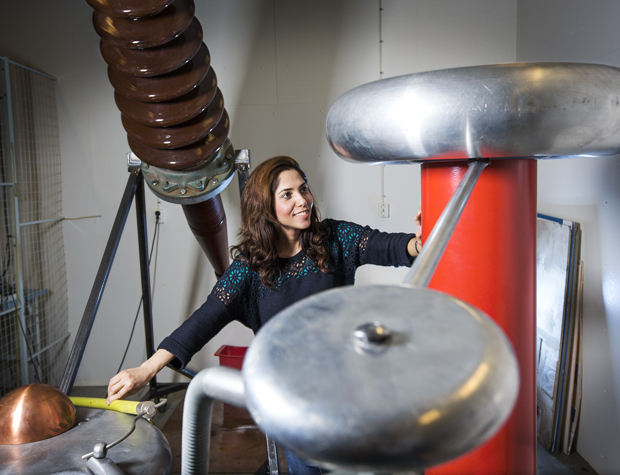Lightning harnessed to protect grid components
The foes of power grids everywhere, lightning and other high voltage currents now can help utilities track the health of components throughout their systems.

For good reason, when power switches or lightning create high voltage currents, power companies view it as a problem. These so-called natural transients have the power to destroy components and cause disturbances along the transmission line.
But Roya Nikjoo went looking for the positive side of natural transients, and she found it. The KTH Electrical Engineering doctoral student at the Swedish Centre for Smart Grids and Energy Storage, SweGRIDS, has developed a system that uses natural transients to measure the wear and tear on power components.
“We can use these high voltages to obtain more information about the condition of components like transformers and bushings than through offline inspections,” she says. “It gives us a more systematic way of tracking the trends in how components’ conditions are affected by high voltages.”
The technique she developed can be thought of as “preventive medicine”. Components can then be replaced or fixed before they themselves cause damage to neighbouring equipment.
The work has earned Nikjoo honours from SweGRIDS, as well as the Young Researcher Award at the 18th International Symposium on High Voltage Engineering, ISH, 2013, Seoul, Korea, for her paper, “Insulation Condition Diagnostics of Oil-impregnated Paper by Utilizing Power System Transients”. She won a similar award in Vienna in 2012.

The measurements begin as the signals created when lightning or power switches break an electrical circuit, interrupting the current or diverting it from one conductor to another. Those signals are used as stimuli to obtain the response from power components, Nikjoo explains.
Starting her project in 2011, Nikjoo equipped power components in the lab with sensors to measure the current of lightning or switching impulses with different frequencies as it goes through the component.
The output produces a graphic representation of the system, much the same way as ultrasound produces an image of a fetus. “It’s like getting the fingerprint of the component,” Nikjoo says. “As that fingerprint changes I can use it to identify the well-being of the component, and know if something is wrong.”
In recent months Nikjoo has been performing the tests with higher voltages that are more akin to what occurs in the field. She also has been investigating all the parameters that can affect the accuracy of the results, such as the cables’ coupling, in the measurement circuit.
The method will save power grid operators money in equipment replacements and maintenance, while keeping customers powered up.
“This can make electricity more reliable in a smart grid. Customers won’t need to worry about blackouts or losing money due to a shutdown.”